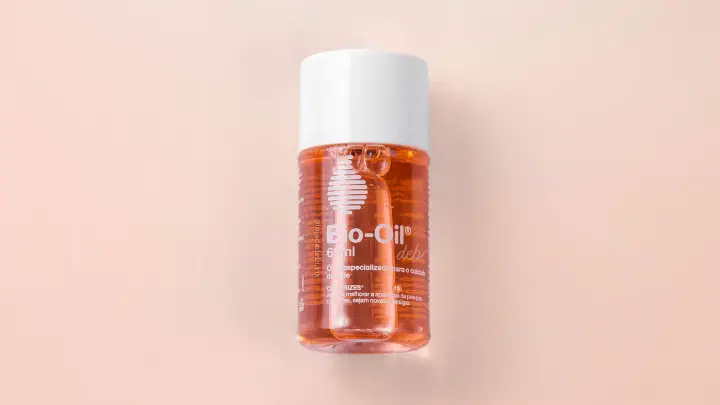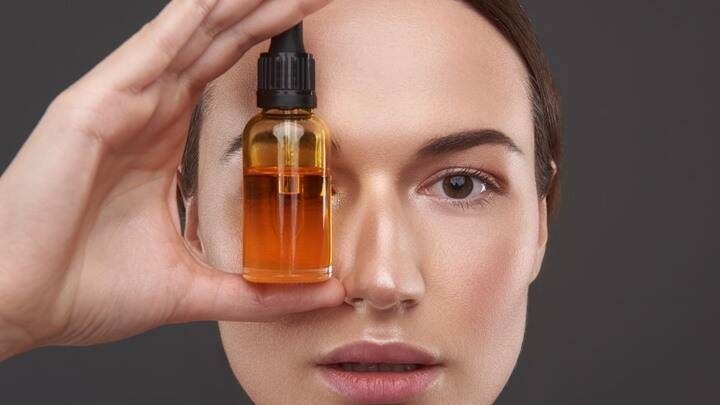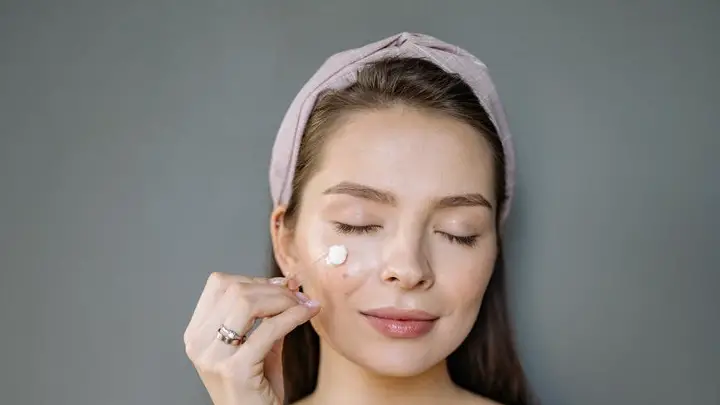The pursuit of a healthier, younger-looking appearance is something that has been around since the beginning of time. With the latest advancements in skincare technology, we can now use ingredients like niacinamide to give our skin the benefits we crave.
Niacinamide is a powerful ingredient good for acne, wrinkles, and age spots. It penetrates deep into your skin for lasting effects and it’s not just beneficial for aging skin; all skin types can benefit from its applications.
From oily to dry to acne-prone, niacinamide can do wonders for your skin. In this article, we’ll answer all your questions about niacinamide and how you can use it as a treatment for your skin type.
NIA-what?
Niacinamide (also known as nicotinamide) is a water-soluble vitamin that has been shown to have various benefits for skin, including skin hydration, reducing inflammation (and therefore redness), improving skin barrier function, and more.
This form of vitamin B3 is an essential nutrient that naturally occurs in various foods, like fish, nuts, beans, and eggs. You can also find it in different dietary supplements and skin products such as moisturizers and serums.
Can Niacinamide Stop Oily Skin?
Niacinamide is one of the most effective ingredients for oily skin because it reduces the rate of sebum (oil) production. That’s why it’s become a favorite ingredient in oily skin products, including serums, moisturizers, and masks.
“While it’s no magic treatment for getting rid of oily skin, niacinamide has great benefits for oily skin types. This includes reducing the appearance of both acne and pore size, and regulating the production of sebum,” Dr. Judith Hellman explains.
So, how does it work? Niacinamide increases the rate of cell turnover while also increasing collagen production. Both factors combine to reduce oil production and breakouts while also improving the overall quality and texture of your skin.
“However, for niacinamide to be effective in getting rid of oily skin, it needs a complementary ingredient like salicylic acid or benzoyl peroxide that can draw out excess oil and impurities from pores,” Hellman explains further.
Can You Use Niacinamide on Dry Skin?
Dry skin can be caused by various factors, including genetics or exposure to free radicals and environmental toxins. It can also happen when the skin’s barrier is damaged or when the skin is producing fewer amounts of oil.
Whichever it is, niacinamide is one of the most effective skincare ingredients for getting rid of dry skin. It works in two ways to improve dry skin—it increases the water content in the skin, and it decreases damage from environmental stressors.
Niacinamide is a skin conditioning agent, and research has shown that it helps prevent moisture loss from the top layers of the skin. It does this by strengthening the skin’s lipid barrier, which reduces the amount of moisture leaving the skin.
According to Dr. Cybele Fishman, a New York-based dermatologist, this vitamin also acts as an anti-inflammatory and antioxidant agent in the body, protecting against free radicals and environmental toxins which can contribute to dry skin.
Is Niacinamide Good for Wrinkles?
As we age, the support structures in our skin weaken and the collagen and elastin fibers break down. This leads to an increase in wrinkles, fine lines, blotchiness, and other signs of aging on the face.
But with niacinamide, you can reduce wrinkles and improve your skin health for a more youthful appearance. It is a common ingredient in many anti-aging products due to its ability to reduce the appearance of wrinkles and other aging signs.
“Vitamin B3 works by improving blood circulation, which assists with the production of collagen and elastin,” Fishman says. “It also helps reduce inflammation while protecting your skin from harmful environmental elements.”
You can also use this vitamin with topical retinoids or other anti-aging products to minimize the appearance of fine lines and wrinkles. However, your skin might be sensitive to these other products, so ensure to visit your dermatologist before use.
Can Niacinamide Reduce Dark Spots?
Dark spots indicate hyperpigmentation, which can be caused by several things. It is most commonly the result of sun exposure, but it can also be caused by many factors, including acne scars and hormonal changes.
Niacinamide helps to reduce dark spots by reducing the rate of melanin production in the skin. Melanin is the pigment that gives skin, hair, and eyes their color however, too much of it is what causes dark spots on the skin.
“Niacinamide works to reduce melanin production by inhibiting the enzyme tyrosinase, which is responsible for producing melanin,” Hellman says. “It also speeds up the rate at which epidermal cells turn over, making your skin brighter and visibly smoother.”
You can apply niacinamide topically or take it orally to reduce hyperpigmentation. As long as you are taking a daily dose of niacinamide, you can stop using your skin-lightening cream and save some money.
Is Niacinamide a Good Solution for Acne?
Acne is a common skin condition caused by hormones, stress, diet, and other factors. It is also unsightly and can make you feel more self-conscious. Fortunately, acne is not a permanent condition, and one way to combat it is by using niacinamide.
“In the skin, niacinamide is converted to another compound, which inhibits the enzymes that make sebum. Sebum is the natural oil that lubricates your skin, but too much can cause acne and other skin problems,” says Hellman.
In her words, niacinamide can unclog pores by preventing excess sebum production, which can result in breakouts. Additionally, it plays a part in reducing redness and swelling by inhibiting the activity of certain inflammatory cells.
Another way this vitamin helps is by increasing cellular turnover, which helps reduce large pores and decrease the appearance of acne scars. It can also help to make the surface of acne-prone skin smoother by strengthening the barrier function.
Is Niacinamide the Same Thing as Niacin?
Niacinamide and niacin might sound similar but they vary greatly in their structure and makeup. They both have the same benefits, but niacinamide is a more stable form of vitamin B3 that can be used in higher doses than its counterpart.
Niacinamide promotes healthy skin by reducing inflammation, preventing age spots, and evening skin tone. It also supports circulation in the skin, which helps with many skin conditions, like rosacea and dermatitis.
Niacin has similar effects on your skin when applied topically, but it can cause stomach upset if used in high doses. For these reasons, niacinamide is preferred for topical application, while niacin is better for oral use.
Benefits of Using Niacinamide on Skin
Niacinamide is a great way to improve the appearance of your skin. It is widely used as an ingredient in skincare products because it can help:
- Balance skin oil production
- Lighten and even out skin tone
- Prevent moisture loss
- Protect skin from sun damage
- Increase cell turnover
- Combat free radicals that cause premature aging
- Improve the appearance of fine lines and wrinkles
- Improve the condition of the skin’s surface barrier
- Treat acne and other skin conditions like psoriasis and rosacea
What Percentage of Niacinamide Is Good for Skin?
The recommended percentage of niacinamide for topical use is 10% to 20%. Products with this concentration are widely available over the counter.
But if you need something stronger, there are products with up to 50% niacinamide which may be prescribed by your dermatologist.
“You can also find this vitamin in many health and wellness supplements. Some people prefer taking it orally for an array of conditions such as acne, rosacea, psoriasis, eczema, and seborrheic dermatitis,” Jamie says.
The recommended daily intake of oral niacinamide varies depending on the reason for taking it. For example, if you are taking it for acne, the suggested dosage is 250mg three times per day.
If you are taking it for pellagra, the suggested dosage is 300-500 mg per day. In general, the best dose to take niacinamide is 15-30 mg per day under a doctor’s supervision.
Side Effects and Risks
Experts consider niacinamide safe for all skin types, but some people have reported different side effects when using niacinamide.
These side effects are typically mild and include redness, itching, flushing, and burning sensations on the skin. Some people may also experience dryness, peeling, or rash when they start to use.
Tell your doctor or pharmacist if any of these symptoms persist. Moreover, it’s best to do a patch test on a small area of the skin before using this ingredient to avoid any unwanted effects.
How to do a patch test:
- The best place to do a patch test is the skin on your wrist. Clean your wrist with a gentle cleanser and lukewarm water.
- Pat it dry with a clean towel or washcloth.
- Apply a small amount of your niacinamide product to your wrist.
- Rub it in with your fingertips to see if your skin reacts to it.
- Leave it on for 24 hours, then examine the area by looking for any sign of redness, dryness, or sensitivity.
- If reactions occur, discontinue use and contact your dermatologist.
- If there are no reactions after 24 hours, it’s safe to use niacinamide on your skin.
How to Use Niacinamide on Skin
- Cleanse your face with a gentle cleanser and water
- Apply toner to close off pores and remove any cleanser residue.
- Pat your face dry with a clean towel, then apply your product.
- Using small circular motions, massage it into your skin for about 1 minute.
- Wait for 10 minutes, then apply a moisturizer to act as an effective barrier between your skin and the atmosphere.
- Apply sunscreen if desired.
Apply niacinamide to your skin after cleansing and toning but before moisturizing and applying sunscreen on your face.
FAQs
What can you use niacinamide for?
The most common use of niacinamide is to treat skin issues, such as acne, wrinkles, fine lines, sun damage, redness, and hyperpigmentation.
Niacinamide can also improve your skin’s moisture barrier, which in turn increases hydration. It does this by increasing the level of lipids produced in the inner layer of the skin.
How often should you use niacinamide on the skin?
Twice a day. Experts recommend using niacinamide twice per day: once in the morning before applying other skincare products and once at night before bed.
For best results, use this vitamin with other anti-aging ingredients like retinol. For instance, you can use a niacinamide serum in the morning and a retinol cream at night for younger-looking skin.
Can you use niacinamide with vitamin C?
No, you can’t. Niacinamide and vitamin C are both powerful ingredients, but mixing them together can be a recipe for disaster.
When you mix these two together, it creates a chemical reaction that is too destructive on the skin’s surface and can actually cause damage to your skin cells instead of protecting them.
Conclusion
Niacinamide is one of the most important ingredients in skincare, and it can help you achieve your best skin ever. It prevents the formation of blackheads and blemishes and improves the appearance of enlarged pores.
In addition, this ingredient helps with dry skin, hyperpigmentation, fine lines, and wrinkles. It also acts as an anti-inflammatory agent to reduce redness and inflammation in your skin.
You can take niacinamide orally as a supplement and you can also apply it topically on the skin. It works both ways. However, ensure to do a patch test and consult with your doctor first before using niacinamide as part of your daily skincare routine.
Thanks for reading.
Serum101 provides you with helpful articles to help you learn more about different skincare ingredients and how they can benefit your skin.






